
According to Thanksgiving lore, the pilgrims were actually forced to land on Plymouth Rock — they were low on beer you see. Back in those grand old days (the roaring 17th century), beer was a dietary mainstay (the beverage being a not-very-alcoholic concoction drunk in impressive quantities during the Colonial era). On a long ship voyage, beer would keep longer than ordinary water.
Like many great things, Thanksgiving has a rich tradition soaked in beer. This time of the year is made for celebrating, and nothing says socializing and solemnizing more than a brewski between friends and family. But do you know what makes big toasts even more personal during the Thanksgiving season? If you actually made that fine bottled beverage yourself.
So, in the spirit of both thanks and giving, we reached out to a few of our favorite craft breweries around the country to get their advice on the ultimate homemade treat — homebrewed beer. From Florida to Colorado, craft breweries like Founders, Schlafly and Nantahala offered up excellent insights for homebrewers everywhere. We thank them all for taking time out of their busy holiday schedules to participate, and we wish everyone in the craft brewing world a happy and safe Thanksgiving holiday. Here we go…
Hone your sensory analysis

Gary Glass, director
American Homebrewers Association (Boulder, Colo.)
One of the most important aspects of homebrewing is learning what not to do. We’re all going to make mistakes, that’s simply inevitable, but if you don’t know you’ve made a mistake, there’s no way to learn from the experience. Unfortunately, you cannot depend on your friends to give you honest feedback. Your friends don’t want to tell you they don’t like something about your beer, and most likely they aren’t trained to identify off-flavors.
You cannot learn sensory analysis from reading books because everyone’s palate is different, so how you perceive and describe a particular off-flavor is likely different from how someone else perceives that same off-flavor. One option is to enter homebrew competitions. Judges do their best to convey what they perceive in the beers they judge, pointing out off-flavors that deduct from an overall score. Once you get your score sheets back, you can review the comments while sampling the homebrew that you entered and compare them to your own tasting experience.
An even better way to learn about off-flavors is to actually participate in a homebrew competition. Competition organizers are always looking for volunteer stewards to help out. Stewards make sure the judges have everything they need so that the judges can focus on evaluating the entries. The stewards get to hear the judges deliberate about what they are perceiving in each entry and frequently get to sample along with the judges. This is an excellent means of learning about off-flavors and is an invaluable experience for those looking to become beer judges.
The Beer Judge Certification Program registers nearly 600 competitions a year. To find a competition in your area, check out the competition calendars on HomebrewersAssociation.org or BJCP.org.
Join the club
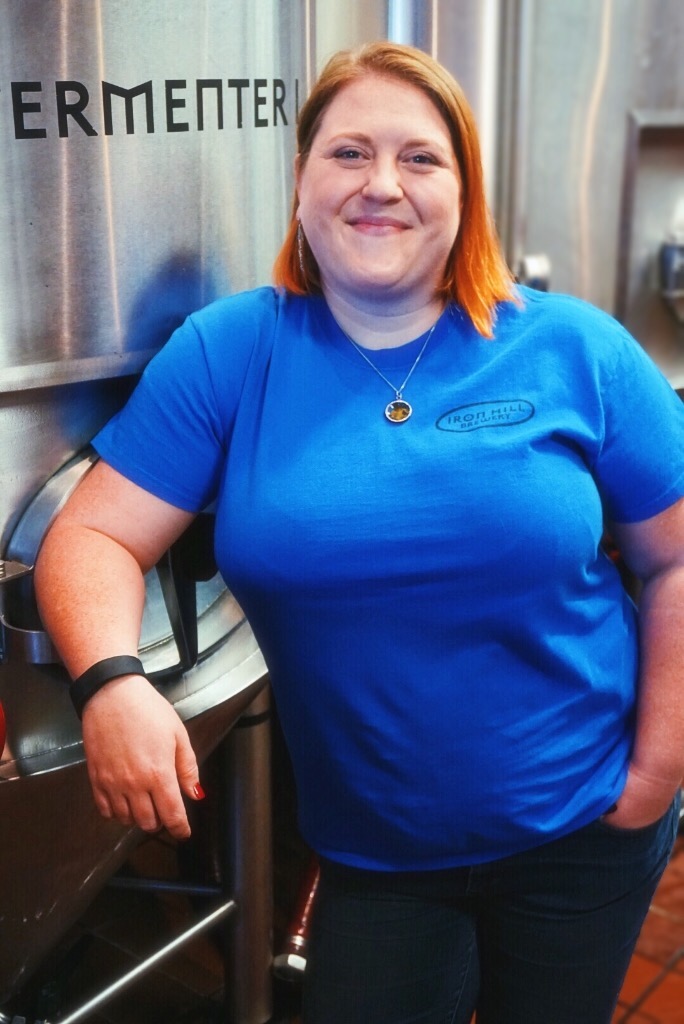
Moriah Guise, head brewer
Iron Hill Brewery and Restaurant (Newark, Del.)
One of the most helpful things that I did when getting started as a homebrewer was developing a network of people that were out there with the same mission — to make tasty brews. Members of homebrew clubs, the staff that works at the local homebrew shop, even professional brewers from your favorite local brewpubs — these are the people that prove to be the most valuable resources.
A lot of people underestimate the benefit of having people to “talk shop” with when it comes to a hobby like homebrewing. Whether you’re looking for advice or feedback on purchasing a new upgrade for your brewing setup, trying to find a solution to a problem, or just looking for someone to hang out with while you brew on a Saturday, having a group of people you can turn to is awesome. You might find someone who’s a microbiologist by day that can teach you a thing or two about yeast. Or a welder that can help you finally build that brew stand you’ve been dreaming about. Or a beekeeper that can hook you up with a good deal on local honey for your next brew.
Don’t underestimate the wealth of knowledge that’s right in your backyard. The internet can’t taste your latest brew to help you trouble shoot where that weird flavor you can’t quite put your finger on is coming from. That online shop isn’t going to do you any good when you drop your carboy and it shatters just as your boil is coming to an end. Just remember to always return the help, share your knowledge and share your beer.
Do a deep clean
Greg Geiger, brewmaster
Nantahala Brewing Co. (Bryson City, N.C.)

When making beer, a brewer’s main goal is to raise a culture of healthy and stylistically appropriate microbes. These tiny creatures — who do all the heavy lifting in the beer making process — won’t grow to their potential if they have to compete with other yeast or bacteria that may have been inadvertently introduced to the process. It is the brewer’s obligation to develop a proper cleaning and sanitizing routine to give the desired microbes the environment they need to thrive and reproduce.
From the moment the boil ends to the moment the last beer is enjoyed, a good brewer ensures that the beverage doesn’t touch anything unsanitary. When discussing sanitary surfaces, we’re not just referring to an exterior that is physically dirty, but also a surface that may inherently hold on to bacteria. At home, this translates to any equipment with scratches — pipe threads, old/cracked hoses and gaskets or wood with small crevices in it; these items are inherently unsanitary. A brewer can’t remove yeast and bacteria they may be harboring through simple means. A soak in PBW followed by a dip in Star San isn’t always enough. Small parts may be sterilized with steam from a pressure cooker or a long boil in a pot, but for some items such as a heavily scratched carboy, there is nothing that can be done. Keeping equipment in good shape and making sure to replace pieces that are past their prime is the only way to ensure items thought to be clean truly are.
Many factors go into making great beer. A proper cleaning routine is one of the few components completely within the brewers control.
Rules can be broken (or at least twisted)

Brian O’Donnell, head brewer
Beau’s All Natural Brewing Co. (Vankleek Hill, Ontario)
My advice for home brewers is to use style guidelines as exactly what they are: guidelines. Any style of beer can be altered to be your own — to reflect your own unique interpretation of it —your own interesting twist.
Style guidelines are great, of course. They’re very helpful for when you’re judging beer, especially in a competition, but you shouldn’t let them hold you prisoner. Make your own recipes. It’s always fun to follow someone else’s and to see if you can recreate it — or try to clone someone else’s beer — but it’s a lot more fulfilling if you create your own and do it all from scratch.
Another bit of advice is to try to brew at home regularly. I find that if you let it go too long, you may fall out of your habits and lose your rhythm. If you keep doing it every weekend — or a couple of times a week — you’ll get used to the process so you can focus more on your recipe or making sure your measurements are correct.
Water quality is key
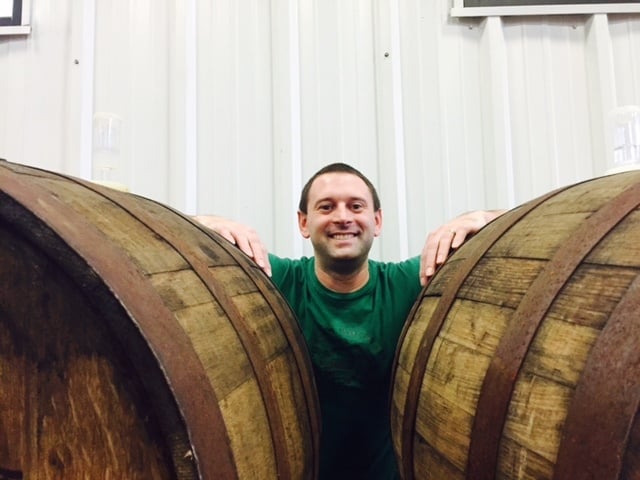
Joe Walts, quality control manager
Ale Asylum (Madison, Wis.)
When I moved from Ann Arbor, Mich., to Madison, Wis., as a young homebrewer in 2005, I was shocked when my brewhouse efficiencies dropped by as much as 20 percent. The driving force was the alkalinity of my brewing water jumping about eight-fold, which sent my mash pHs through the roof and lowered the standard of living of many amylase enzymes. A crash course in water chemistry was necessary at the time, and I continue to learn about the subject today.
Here’s how I currently approach water/mash treatments for most beers:
- Add a combination of calcium chloride and calcium sulfate to all brewing water until its concentration of calcium ions is at least 40 mg/L. I don’t believe that sulfate enhances hop character, but that’s a discussion for another day.
- Treat all brewing water with lactic acid until its effective alkalinity (alkalinity that would remain if lactic acid didn’t re-acquire hydrogen ions during alkalinity titrations) is 50 mg/L as CaCO3. This will preserve the calcium in your water – unlike phosphoric acid – and protect against excessive tannin extraction during sparging.
- Replace a portion of base malt with acidulated malt, add lactic acid directly to the mash, or add slaked lime directly to the mash to target a mash pH of 5.3-5.4. Samples should be pulled near the end of conversion to ensure equilibrium and cooled to room temperature before measuring.
Alternating between acid/base additions and pH measurements during mashing can produce unstable results, so knowing how various malts will impact mash pH is a useful skill. I cover the details in a presentation that lives at https://sites.google.com/site/republicbrewpub, and the water spreadsheets on the same website can help you with the math.
Happy yeast, quality beer
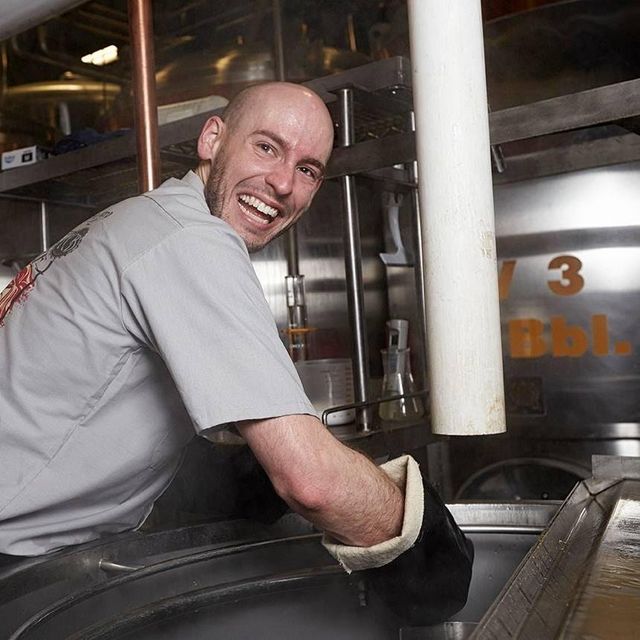
Taylor Krantz, brewer
Fort Collins Brewery (Fort Collins, Colo.)
When it comes to homebrewing and professional brewing there is one common thread, having happy and healthy yeast. When I homebrew, I like to always do a good starter for my yeast that I have picked up from the local homebrew store. I have found that one of the easiest ways to do the starter is to get around a 1-2L erlenmeyer flask. You can dissolve, boil and cool a little bit of DME in it and pitch the yeast. Throw a bubbler on top, and you are set to go. If you choose, you can even easily make or buy a little stir plate to help prop up the yeast even more. This ensures that you have a good pitch of yeast that is roaring and ready to go.
Persistence to your craft (and take notes)
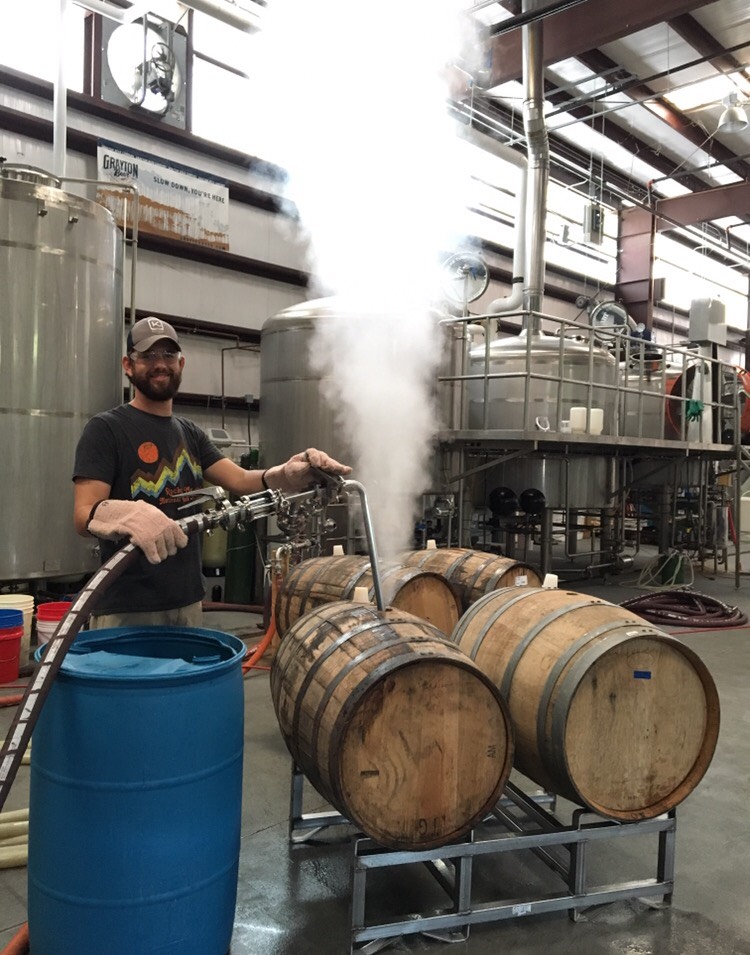
Tyler White, head brewer
Grayton Beer Co. (Santa Rosa Beach, Fla.)
Homebrewing, so often, is where the passion for our great craft begins. I will always remember the first time that I brewed something that could actually be enjoyed by others. The stars aligned for me that day in so many ways. What set the hook was the creativity, the mystery and the romance of brewing. These components are still a large part of what make my career as a brewer satisfying and engaging. However, as I have advanced and grown over the last few years, my focus has shifted a bit, and this is where my advice comes in.
First and foremost, it is one thing to brew great beer. However, being able to brew that exact beer, with that exact flavor profile, over and over again takes knowledge and persistence to our craft. In order to achieve this, I’ve become aware that great learning experiences come from heeding the advice of more experienced brewers and a commitment to reading and researching. I absolutely advise brewers of all experience levels to do this. Second, get plugged into your brewing community and take advantage of all the great resources that are available in our ever-growing industry.
Finally, having said this, there is no way to apply any of this knowledge without detailed record keeping throughout the process. Too often, I talk to brewers who may have an extensive knowledge base and may make great beer, but when they encounter an undesired outcome they aren’t sure why because they haven’t recorded their process well. Comprehensive record keeping allows you to track down details, to see trends over time, and to ultimately learn from your own experiences. To sum things up: Keep brewing, keep learning and write it all down.
Mr. Clean

Jeremy Kosmicki, head brewer
Founders Brewing Co. (Grand Rapids, Mich.)
I’m sure everyone’s heard it before, but the best advice I can give is to clean, clean, clean. Particularly, anything that happens after the boil is done. Wort is very susceptible to contamination, especially before any alcohol has been produced. Soak and scrub with a quality cleanser anything that will come into contact with the wort/beer, and then use a sanitizer immediately before using that hose or filling that carboy or bottles. And buy yourself some sanitary gloves to wear also. It’s a great habit to get into that can save you from future heartbreak.
What to do and when
Stephen Hale, ambassador brewer
Schlafly Beer (St. Louis, Mo.)

Many of us in the craft brewing community had our roots in the home brewing world, and for that, we offer additional thanks for the chance to have gained practical experience at the 5- gallon level before working with larger, commercial equipment. I know that I felt blessed when I started with Schlafly Beer (The Saint Louis Brewery); I was given the opportunity to be assistant brewer to Dave Miller, who has written half a dozen books on homebrewing. Neither Dave nor I knew how to run a system this large, but with the help of co-founder Dan Kopman and a strong dose of common sense, we figured out how to make it all work. It would not have been possible, of course, without a sound background in homebrewing.
For newer homebrewers in particular, remembering the basics of what to do and when (don’t boil the yeast!) can give one some basic confidence. We all know the process is generally rudimentary, but eliminating the fear one might have goes a long way to making the whole process a lot more comfortable. Much has already been written about using the best ingredients one can find, establishing a sound connection with one’s local homebrew supply shop and engaging with fellow brewers everywhere, and several clever quips also help one to understand that at the end of the day, it’s beer, and it is good. Not every batch will end up as intended, but a few deep breaths and healthy doses of common sense can instill a certain Zen so that it actually becomes the wonderful, fabulous hobby that it is.
The most expensive equipment available will not necessarily make the best beer one has ever had; plenty of medals have been awarded to beers made with plastic fermenters and barebones systems, so don’t feel the need to buy the latest and greatest (sure, new gadgets are fabulous and often quite helpful; spend it if you’ve got it and it makes better beer, but don’t sweat it if you can’t do that). Keeping things simple can lead to some of the best results, I know some of my favorite beers are brewed with the fewest ingredients, so take heart that following the basics will work well. Prost!


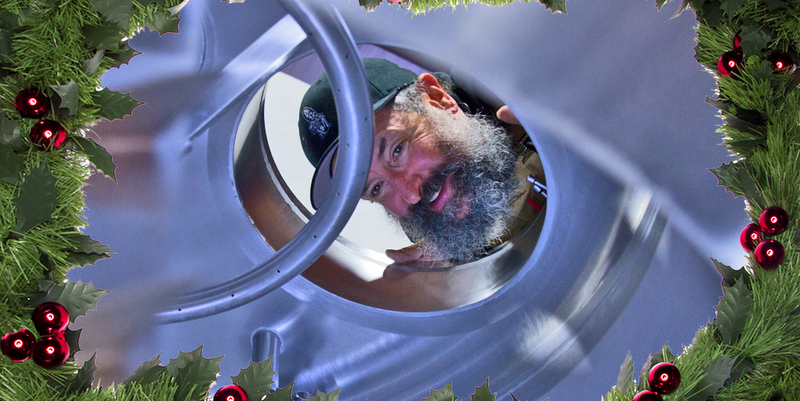

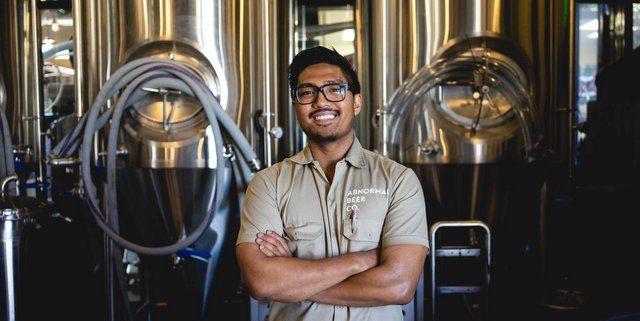
RT @CraftBrewingBiz: Some Thanksgiving leftovers: Homebrewing advice from world-renowned craft brewing professionals @IronHillBrewery https…
RT @IronHillBrewery: .@CraftBrewingBiz interviewed industry pros—inc. @ironhillnewark Brewer Moriah—for homebrewing advice. Check it out: h…
RT @CraftBrewingBiz: Some Thanksgiving leftovers: Homebrewing advice from world-renowned craft brewing professionals @IronHillBrewery https…
A Thanksgiving tradition: Homebrewing advice from world-renowned craft brewing professionals https://t.co/PbPSxl2qRe https://t.co/4T0OMmxqDS
Thanksgiving is a day to celebrate Homebrewing as well as friends and family!
https://t.co/qaLMQFZ3U5
A Thanksgiving tradition: Homebrewing advice from #HomeBrewing#BeerBrewing#homemadebeer https://t.co/aOic1EvVdY https://t.co/WNMer75UW5
RT @KCHopTalk: A Thanksgiving tradition: Homebrewing advice from world-renowned craft brewing professionals https://t.co/9Tv1IaoUo0
A Thanksgiving tradition: Homebrewing advice from world-renowned craft brewing professionals https://t.co/9Tv1IaoUo0
#CraftBeer #CraftBrewery #CraftBrewer A Thanksgiving tradition: Homebrewing advice from world-renowned craft br… https://t.co/69zkOcgikq
A Thanksgiving tradition: Homebrewing advice from world-renowned craft brewing professionals https://t.co/xs4VYc66HZ via @craftbrewingbiz
#CraftBeer #LocalBrewery #DrinkLocal #Brewery #craftbeerporn A Thanksgiving tradition: Homebrewing advice from … https://t.co/NuVDbNVTem
A Thanksgiving tradition: Homebrewing advice from world-renowned craft brewing professionals https://t.co/qPYlxIvh6z via @craftbrewingbiz